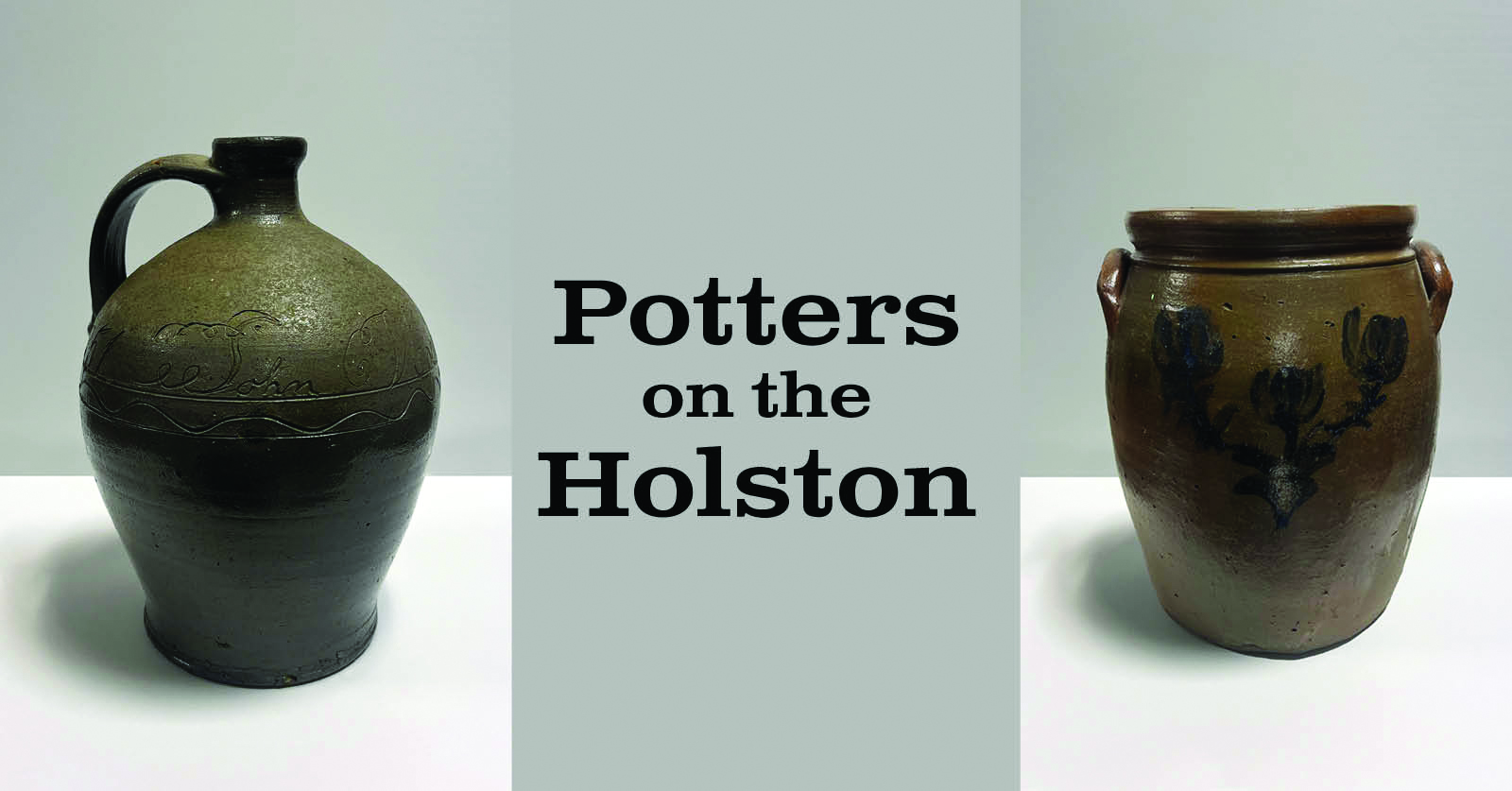

“Potters on the Holston” opens Thursday, Sept. 25 in an exhibition in the Strongwell Gallery and Glenn C. Price Gallery at the William King Museum of Art, Abingdon, Virginia. The exhibit celebrates the 100-year legacy of functional pottery that thrived along the North, Middle, and South Forks of the Holston River that flows through Washington County and Smyth County of Virginia.
During the 19th century, early settlers in Appalachia produced functional stoneware vessels on the wheel and in molds, providing containers for regional wares to be transported on flatboats from Saltville to Kingsport and onward. These potters on the Holston River molded clay from the riverbeds and established a significant industry in this region that predates the boom of the Industrial Revolution.
An adjunct to the main exhibit of 19th-century functional pottery is the work of a young couple from the early 20th century. Flash forward to the year 1938 where Edwin and Mary Scheier, beneficiaries of Franklin Roosevelt’s New Deal, found value in the very same clay along the Holston River. Complete novices to the world of pottery that created a legacy long before them, this young married couple fed their dreams as they fed their kilns. With the establishment of their business, Hillcrock Pottery, they inspired young students and eventually settled into their path as instructors and artisans.
“Potters on the Holston” runs through April 5 and is part of William King Museum of Art’s McGlothlin Exhibition Series. This exhibition is sponsored by Massengill DeFriece Foundation and Washington County.
William King Museum of Art is open Monday through Saturday from 10 a.m. to 5 p.m., and Sunday from 1-5 p.m. Admission to the museum is free. For information on exhibitions or events at William King Museum of Art visit williamkingmuseum.org or call 276-628-5005. Register for classes and events on WKMA’s website.
Accredited by the American Alliance of Museums, William King Museum of Art is a partner of the Virginia Museum of Fine Arts, a member of the Virginia Association of Museums and is funded in part by the Virginia Commission for the Arts and the National Endowment for the Arts.